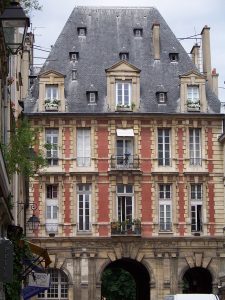
Larry
Let’s go back to Larry’s story. Larry’s wife left their home to live with her sister and brother-in-law because she saw herself as a burden to Larry. His frequent angry outbursts, quite frankly, scared her. Yet, she remained supportive, caring, and frequently urged Larry to seek help through community counseling centers and their local church support groups. He refused to seek help. A man without a job for two years who now needs therapy? His self-esteem was practically non-existent. He became immobilized and got stuck in the depression stage for many months. Finally, when the feeling of helplessness was too much for Larry to bear, he reached out for help through his church. This single act moved Larry to the testing stage of the grieving cycle; as difficult as this was for Larry, it became the turning point of his two year unemployment period.
The Response
Without a response to this information, it’s just that—information. We believe that we need to take action to shift the perception of the organizational underground and to help those in it to once again become contributing members of our society. To do this, we believe that we need to look at the organizational underground from both a systems and an appreciative perspective in order to take appropriate action in response to the crisis.
We must first create awareness that the organization underground of the unemployed and underemployed exists. We also propose that the underground operates as a system and, therefore, a systems approach to working with the underground is necessary. Recall the many underground cities that were created primarily out of man’s basic need—survival. The Vinh Moc tunnels in Vietnam were home to over 400 people for over six years during the Vietnam War and included kitchens, sleeping areas, even a hospital. It was built for survival and clearly served its purpose, as not one person died in this underground city in those years.
One of the most famous undergrounds is the Paris Underground. While its raison d’etre may have changed since the early centuries, it exists to this day. The vision of the Paris underground may not be pleasant. Most of us recall that Victor Hugo

used the sewers in the plot of his famous ten-volume novel Les Misérables, published in 1862. Hugo’s friend Emmanuel Bruneseau was commissioned to carry out an exhaustive survey of the network, providing the novelist with a detailed firsthand account of this subterranean world. In the novel, Jean Valjean carries a friend wounded on the barricades in the 1832 riots through the sewers to safety. Hugo writes that Valjean’s “first impression was of being blind… a wafting, fetid smell reminded him where he was.” The pair arrives at the main sewer ring at around 3pm. They set off again, seeing light in the distance, but find it impossible to get out: “The arch was blocked off by a strong grille.” How much does our organizational underground differ from Hugo’s encounter with the Paris underground? Is there a strong grille preventing escape? Can the strong grille be a metaphor for our current economic policies or companies short-term financial focus?
Download Article 1K Club

















